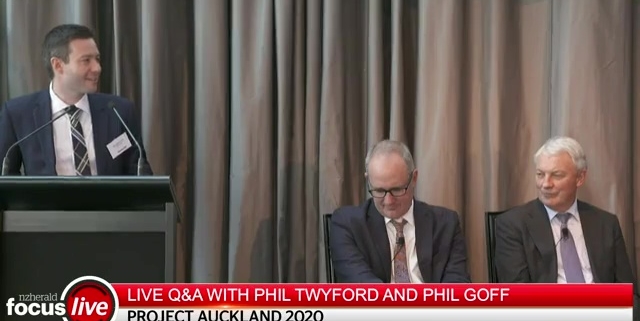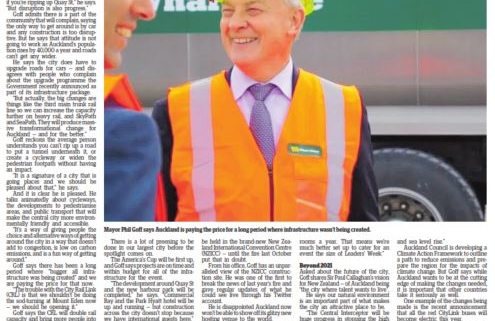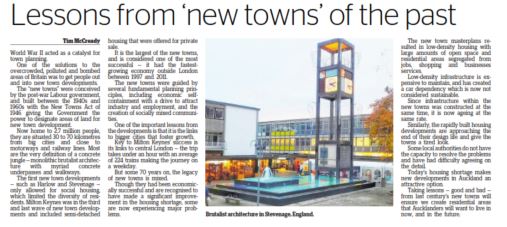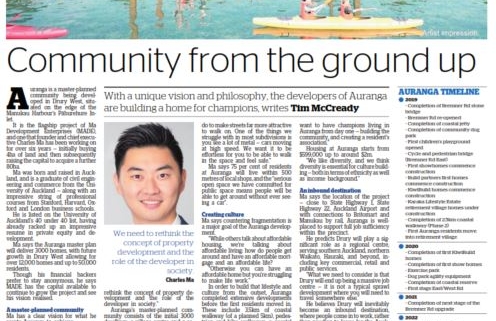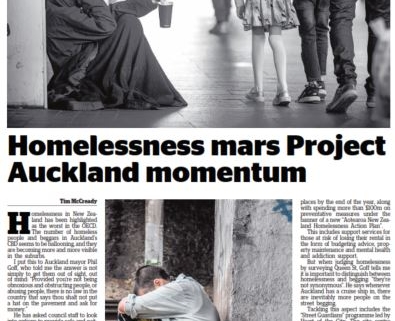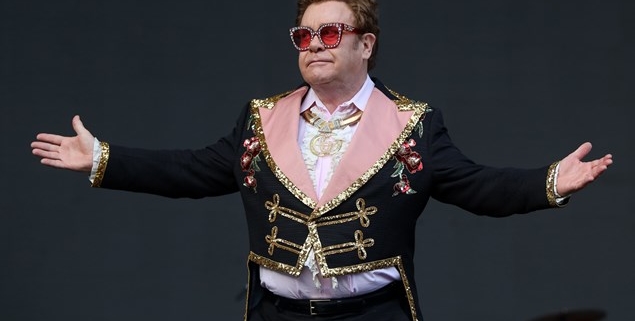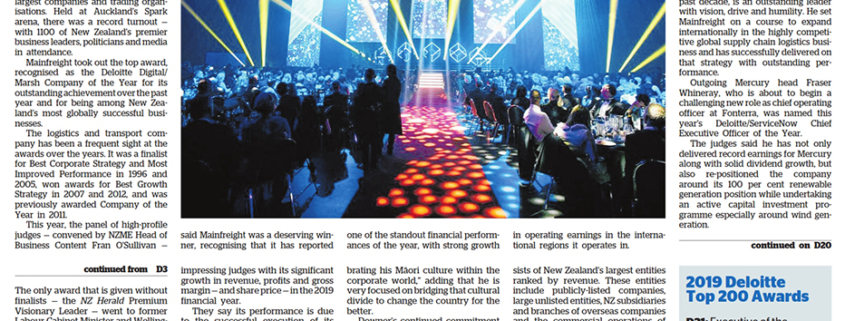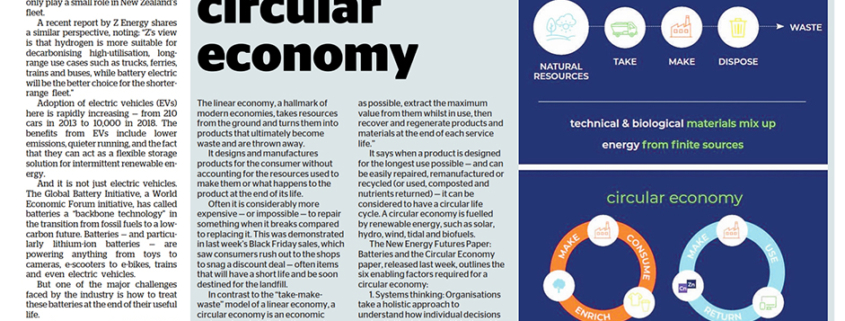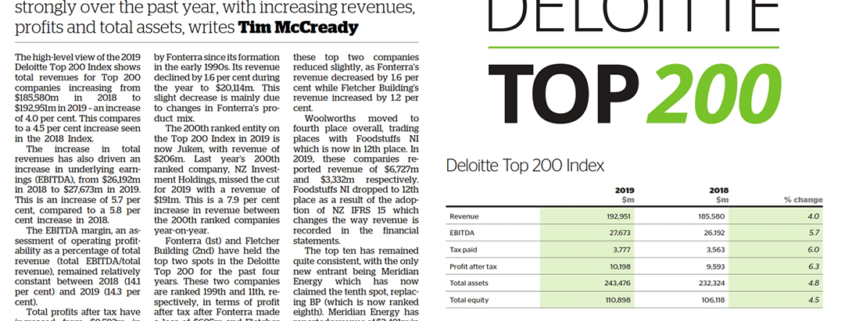http://bit.ly/2v7Q9BQ
Auckland Mayor Phil Goff says although you can mitigate against disruption, you cannot “do” construction without it being in some sense disruptive.
“Of course it is going to be disruptive if you’re ripping out the intersection between Wellesley St to Albert St. Of course it’s going to be disruptive if you’re ripping up Quay St,” he says. “But disruption is also progress.”
Goff admits there is a part of the community that will complain, saying the only way to get around is by car and any construction is too disruptive. But he says that attitude is not going to work as Auckland’s population rises by 40,000 a year and roads can’t get any wider.
He says the city does have to upgrade roads for cars — and disagrees with people who complain about the upgrade programme the Government recently announced as part of its infrastructure package.
“But actually, the big changes are things like the third main trunk rail line so we can increase the capacity further on heavy rail, and SkyPath and SeaPath. They will produce massive transformational change for Auckland — and for the better.”
Goff reckons the average person understands you can’t rip up a road to put a tunnel underneath it, or create a cycleway or widen the pedestrian footpath without having an impact.
“It is a signature of a city that is going places and we should be pleased about that,” he says.
And it is clear he is pleased. He talks animatedly about cycleways, the developments to pedestrianise areas, and public transport that will make the central city more environmentally friendly and accessible.
“It’s a way of giving people the choice and alternative ways of getting around the city in a way that doesn’t add to congestion, is low on carbon emissions, and is a fun way of getting around.”
Goff says there has been a long period where “bugger all infrastructure was being created” and we are paying the price for that now.
“The trouble with the City Rail Link (CRL) is that we shouldn’t be doing the sod-turning at Mount Eden now — we should be opening it.”
Goff says the CRL will double rail capacity and bring more people into the CBD by public transport.
“That was needed five years ago, and the reluctance of the government of the day to participate in that and then putting half the cost on Auckland … almost everybody can now see it was a bad mistake.”
The number of pedestrians on Queen St has roughly doubled in the past five years, the imminent opening of Commercial Bay is going to bring around 10,000 workers into one block, and we are seeing increasing numbers of cruise ships arriving into the city.
Goff asks: “How do you have all of that and have access by people to actually enjoy the city if it is still going to be a place that you drive through, rather than come into?”
A city under the spotlight
Adding to Auckland’s disruption is the preparation for 2021. It is shaping up to be one of Auckland’s busiest and most visible years ever — with the America’s Cup and Apec headlining the year, and other large major events including kapa haka festival Te Matatini, the women’s cricket world cup and the men’s world softball championship.
There is a lot of preening to be done in our largest city before the spotlight comes on.
The America’s Cup will be first up, and Goff says projects are on time and within budget for all of the infrastructure for the event.
“The development around Quay St and the new harbour park will be completed,” he says. “Commercial Bay and the Park Hyatt hotel will be up and running — but construction across the city doesn’t stop because we have international guests here.”
He says as well as the excitement and vibrancy the America’s Cup brings to the city, it also leaves some valuable legacy products — including the strengthening of the wharf, the removal of the hazardous substance tanks, installation of breakwaters, and replacement of the Daldy St stormwater outfall.
New Zealand’s hosting of Apec will involve a full year, with clusters of meetings held over 12 months from December 2020, culminating in the Leaders’ Week and CEO Summit in November 2021. For that, around 10,000 attendees will descend on Auckland, with leaders from most of the 21 economies expected to attend.
The CEO Summit was intended to be held in the brand-new New Zealand International Convention Centre (NZICC) — until the fire last October put that in doubt.
From his office, Goff has an unparalleled view of the NZICC construction site. He was one of the first to break the news of last year’s fire and gave regular updates of what he could see live through his Twitter account.
He is disappointed Auckland now won’t be able to show off its glitzy new hosting venue to the world.
“When we watched the fire start and then just run on for day after day, it was pretty clear that this meant the centre wasn’t going to be ready for Apec, notwithstanding the fact it’s still 21 months away.
“But we did have a contingency plan between government and council, and we have alternative options including the Aotea Centre and others. We won’t have the brand new built-for-purpose convention centre, but Apec will be a success and it’s not the end of the world.”
Goff says preparations have delivered a lot of new hotel beds, including the 300-room Horizon Hotel being built alongside the convention centre.
“We’ve been building 1000 hotel rooms a year. That means we’re much better set up to cater for an event the size of Leaders’ Week.”
Beyond 2021
Asked about the future of the city, Goff shares Sir Paul Callaghan’s vision for New Zealand — of Auckland being “the city where talent wants to live”.
He says our natural environment is an important part of what makes the city an attractive place to be.
“The Central Interceptor will be huge progress in stopping the high level of wastewater overflows into the harbour every time it rains,” he says. The $1.2b wastewater tunnel will run 14.7km long and 4.5m wide from Grey Lynn to the Māngere Wastewater Treatment Plant.
It is due to be operating by 2025 and will help make Auckland’s waterways cleaner by cutting overflows by up to 80 per cent.
Goff frequently talks about his desire to increase Auckland’s resilience to climate change in order to “ensure a better world for our children and grandchildren”. It was one of the major platforms he campaigned on during last year’s election, along with clean transport and protecting the environment.
He says climate change is the biggest environmental threat the world faces, though he admits there is a stark difference between Auckland’s contribution to water quality and climate change.
“The difference is that while the steps we take on water quality immediately act to remedy the problems, the steps we take on climate change are simply our contribution to what needs to be an international effort in order to stop global warming and sea-level rise.”
Auckland Council is developing a Climate Action Framework to outline a path to reduce emissions and prepare the region for the impacts of climate change. But Goff says while Auckland wants to be at the cutting edge of making the changes needed, it is important that other countries take it seriously as well.
One example of the changes being made is the recent announcement that all the red CityLink buses will become electric this year.
Goff says the move will help improve air quality by reducing pollution from black carbon and nitrogen oxide emitted by the current diesel vehicles.
“Black carbon is associated with health problems and has been found in Queen St at levels higher than in some major European and US cities, so it’s a priority for us to address this issue.”
In November 2017, Auckland joined 11 other cities in signing the C40 Fossil-Fuel-Free Streets Declaration, committing Auckland to buy only zero-emission buses from 2025.
But Goff says he’d like to bring that commitment forward.
“The capital cost of an electric bus is much higher. But the advantage is that over the lifetime of the bus, the running costs are half and it pays for itself over that time.”
He says the capital constraints of council means he is talking to the Government about the possibility of extending the feebate scheme to buses.
“Feebate is great for electric cars. I drive an electric car. But these buses are on the road for 18 hours a day — why wouldn’t you want to bring forward that conversion?”
http://bit.ly/2Q4FlvI
World War II acted as a catalyst for town planning.
One of the solutions to the overcrowded, polluted and bombed areas of Britain was to get people out and into new town developments.
The “new towns” were conceived by the post-war Labour government, and built between the 1940s and 1960s with the New Towns Act of 1946 giving the Government the power to designate areas of land for new town development.
Now home to 2.7 million people, they are situated 30 to 70 kilometres from big cities and close to motorways and railway lines. Most are the very definition of a concrete jungle — monolithic brutalist architecture with myriad concrete underpasses and walkways.
The first new town developments — such as Harlow and Stevenage — only allowed for social housing, which limited the diversity of residents. Milton Keynes was in the third and last wave of new town developments and included semi-detached housing that was offered for private sale.
It is the largest of the new towns, and is considered one of the most successful — it had the fastest-growing economy outside London between 1997 and 2011.
The new towns were guided by several fundamental planning principles, including economic self-containment with a drive to attract industry and employment, and the creation of socially mixed communities.
One of the important lessons from the developments is the links to bigger cities that foster growth.
Key to Milton Keynes’ success is its links to central London — the trip takes under an hour with an average of 224 trains making the journey on a weekday.
But some 70 years on, the legacy of new towns is mixed.
Though they had been economically successful and are recognised to have made a significant improvement in the housing shortage, some are now experiencing major problems.
The new town master plans resulted in low-density housing with large amounts of open space and residential areas segregated from jobs, shopping and businesses services.
Low-density infrastructure is expensive to maintain, and has created a car dependency which is now not considered sustainable.
Since infrastructure within the new towns was constructed at the same time, it is now ageing at the same rate.
Similarly, the rapidly built housing developments are approaching the end of their design lives and give the towns a tired look.
Some local authorities do not have the capacity to resolve the problems and have had difficulty agreeing on the detail.
Today’s housing shortage makes new developments in Auckland an attractive option.
Taking lessons — good and bad — from last century’s new towns will ensure we create residential areas that Aucklanders will want to live in now, and in the future.
http://bit.ly/2IA6UbW
Auranga is a master-planned community being developed in Drury West, situated on the edge of the Manukau Harbour’s Pāhurehure Inlet.
It is the flagship project of Ma Development Enterprises (Made), and one that founder and chief executive Charles Ma has been working on for over six years — initially buying 4ha of land and then subsequently raising the capital to acquire a further 80ha.
Ma was born and raised in Auckland, and is a graduate of civil engineering and commerce from the University of Auckland — along with an impressive string of professional courses from Stanford, Harvard, Oxford and London business schools.
He is listed on the University of Auckland’s 40 under 40 list, having already racked up an impressive resume in private equity and development.
Ma says the Auranga master plan will deliver 3000 homes, with future growth in Drury West allowing for over 12,000 homes and up to 50,000 residents.
Though his financial backers prefer to stay anonymous, he says Made has the capital available to continue to grow the project and see his vision realised.
A master-planned community
Ma has a clear vision for what he wants Auranga to achieve:
“My vision is an intensely personal one, emanating from my desire to add to human worth by creating places that foster and share social equity.”
What he says may sound idealistic, but it is obvious in the way he is designing Auranga that he truly believes it is possible. He says developing communities that have a positive impact on people’s sense of belonging, and that connect people, place and purpose, is at the core of his urban design philosophy.
“I’m a believer that we need to rethink the concept of property development and the role of the developer in society.”
Auranga’s master-planned community consists of the initial 3000 dwellings, a village centre and a retirement village. Other amenities include exercise spaces, playgrounds, a 5km coastal walkway and vast tracts of open space.
Ma’s passion for developing an ecosystem is evident in the detail. Auranga will have narrow single-laned roads, with median strips that are planted with trees. “We’re trying to create streets for people — not roads for cars,” he says, pointing to the wide footpaths, dedicated cycle ways and limited parking on streets.
“There are certain things you can do to make streets far more attractive to walk on. One of the things we struggle with in most subdivisions is you see a lot of metal — cars moving at high speed. We want it to be effortless for you to be able to walk in the space and feel safe.”
Ma says 75 per cent of residents at Auranga will live within 500m of local shops, and the “serious open space we have committed for public space means people will be able to get around without ever seeing a car”.
Creating culture
Ma says countering fragmentation is a major goal of the Auranga development.
“While others talk about affordable housing, we’re talking about affordable living: how do people get around and have an affordable mortgage and an affordable life?
“Otherwise you can have an affordable home but you’re struggling to make life work.”
In order to build that lifestyle and culture from the outset, Auranga completed extensive developments before the first residents moved in. These include 3.5km of coastal walkway (of a planned 5km), pedestrian and bike walkways, a coastal jetty for swimming and kayaking, exercise park, playground and a dog park. Auranga’s retirement village is now open, and toward the end of this month the first KiwiBuild residents are due to move in.
Ma says that usually in these sorts of developments you would expect affordable housing to be the last housing available.
But Made is rethinking this notion — even by name.
“We call it champion housing, not affordable housing,” he says. “We want to have champions living in Auranga from day one — building the community, and creating a resident’s association.”
Housing at Auranga starts from $599,000 up to around $2m.
“We like diversity, and we think diversity is essential for culture building — both in terms of ethnicity as well as income background.”
An inbound destination
Ma says the location of the project — close to State Highway 1, State Highway 22, Auckland Airport and with connections to Britomart and Manukau by rail, Auranga is well-placed to support full job sufficiency within the precinct.
He predicts Drury will play a significant role as a regional centre, serving southern Auckland, northern Waikato, Hauraki, and beyond, including key commercial, retail and public services.
“What we need to consider is that Drury will end up being a massive job centre — it is not a typical sprawl development where you will need to travel somewhere else.”
He believes Drury will inevitably become an inbound destination, where people come in to work, rather than needing to leave for the Auckland CBD or elsewhere.
Planning for the future
Over the next five years, additional infrastructure projects planned for Auranga include a pre-school and primary school (2022), secondary school (2026), eco-islands (2023) and new railway stations (2024).
Ma says collaboration and openness with central and local government, iwi and communities has been key to bringing together and advancing the development. He says bringing everyone on board so that they buy into the vision he has for the development has been critical, and describes iwi as one of the project’s greatest champions.
Ma reckons if you start a project well, you have a greater chance of it ending well.
“For me, I’m passionate about starting well. After that, people just follow the culture.”
He hopes that Auranga will set the tone for what future developments in Drury, Auckland — and even around the world — could look like.
“I want to create a place that is so good, that it becomes a blueprint for future communities.”
http://bit.ly/2YACfm3
At last night’s highly anticipated Deloitte Top 200 event, the winners of 11 award categories were unveiled.
The prestigious black-tie event recognises and honours outstanding performance among New Zealand’s largest companies and trading organisations. Held at Auckland’s Spark arena, there was a record turnout — with 1100 of New Zealand’s premier business leaders, politicians and media in attendance.
Mainfreight took out the top award, recognised as the Deloitte Digital/Marsh Company of the Year for its outstanding achievement over the past year and for being among New Zealand’s most globally successful businesses.
The logistics and transport company has been a frequent sight at the awards over the years. It was a finalist for Best Corporate Strategy and Most Improved Performance in 1996 and 2005, won awards for Best Growth Strategy in 2007 and 2012, and was previously awarded Company of the Year in 2011.
This year, the panel of high-profile judges — convened by NZME Head of Business Content Fran O’Sullivan — said Mainfreight was a deserving winner, recognising that it has reported one of the standout financial performances of the year, with strong growth in operating earnings in the international regions it operates in.
“These results demonstrate that Mainfreight is growing its market share in those large markets, underpinning growth in group profits for the year of 26 per cent and on total revenues of just under $3 billion,” said the judges.
Given Mainfreight’s long-running success, it is plain to see why managing director Don Braid was crowned Executive of the Decade. He has been a previous recipient of the coveted Executive of the Year award in both 2008 and 2011 — one of only two executives to have achieved this in the history of the Deloitte Top 200 awards.
The judges said Braid, who has been at the helm of Mainfreight for all of the past decade, is an outstanding leader with vision, drive and humility. He set Mainfreight on a course to expand internationally in the highly competitive global supply chain logistics business and has successfully delivered on that strategy with outstanding performance.
Outgoing Mercury head Fraser Whineray, who is about to begin a challenging new role as chief operating officer at Fonterra, was named this year’s Deloitte/ServiceNow Chief Executive Officer of the Year.
The judges said he has not only delivered record earnings for Mercury along with solid dividend growth, but also re-positioned the company around its 100 per cent renewable generation position while undertaking an active capital investment programme especially around wind generation.
The only award that is given without finalists — the NZ Herald Premium Visionary Leader — went to former Labour Cabinet Minister and Wellington Mayor Dame Fran Wilde. The judges say this prestigious award recognises Wilde’s ability to see opportunities and take on tough issues — and her passion and energy to make New Zealand a better place.
The judges say Wilde’s contribution to the country has long been underrated: “She does things that are worthwhile. She sees opportunities that are good for the country and the community and is prepared to invest time and effort to help out, paid or unpaid.”
After having been a finalist in the category last year, David Pilkington was named Hobson Leavy Executive Search Chairperson of the Year. He currently chairs the boards of Port of Tauranga, Douglas Pharmaceuticals and investment firm Rangatira.
The judges say he is an inclusive chair, facilitating an environment to get the best out of people, and was selected “due to his track record of success as a chair over a long period”.
Grant Ellis of Restaurant Brands — the company which operates the KFC, Carl’s Junior, Pizza Hut and Taco Bell brands in New Zealand — was awarded University of Auckland Business School Chief Financial Officer of the Year. The judges say Ellis, who has run the financials for over 20 years, has been a key part of the management team and helped drive its growth strategy. “The success of that has resulted in Restaurant Brands delivering top decile shareholder returns of over 30 per cent per annum for the past 10 years,” they say.
The Warehouse Group took out the OneRoof.co.nz Most Improved Performance award this year, impressing judges with its significant growth in revenue, profits and gross margin — and share price — in the 2019 financial year.
They say its performance is due to the successful execution of its business transformation programme in a changing and challenging retail environment.
Datacom was recognised with the 2degrees Best Growth Strategy award. The judges say the longevity and dexterity of the information technology services firm was recognition of its ability to thrive when competing with traditional global players — accumulating an enviable record of 21 years of continuous revenue growth.
Datacom were winners again in the Eagle Technology Young Executive of the Year category, with enterprise portfolio manager James David recognised for his huge vision, passion and outstanding leadership potential.
The judges say David “provides a great example — integrating and celebrating his Māori culture within the corporate world,” adding that he is very focused on bridging that cultural divide to change the country for the better.
Downer’s continued commitment to the Te Ara Whanake programme and its intent over the past five years to increase diversity throughout the company, saw it recognised with a win in the Diversity and Leadership category.
Air New Zealand took out the MinterEllisonRuddWatts Sustainable Business Leadership award. A new category in the awards this year, it recognises businesses working toward creation of long-term environmental, social and economic value.
The judges say while they acknowledge the airline’s environmental impact, they applaud it for introducing measures in areas where it can, and for having a strong impact in social and governance aspects of the category.
The Deloitte Top 200 Index consists of New Zealand’s largest entities ranked by revenue. These entities include publicly-listed companies, large unlisted entities, NZ subsidiaries and branches of overseas companies and the commercial operations of Māori entities. It also includes producer boards, co-operatives, local authority trading enterprises and state-owned enterprises.
The financial figures for the Top 200 as well as New Zealand’s Top 30 finance companies have been produced in full toward the back of this report — showing revenue, profitability, efficiency and more.
These numbers offer an insight into how the biggest companies in New Zealand operate and are accompanied by explanations and insight from the Herald’s team of business reporters.
The high-level story for the Top 200 this year is continued growth. Total revenues rose by 4.0 per cent compared to the 2018 figure. This increase also drove an increase in underlying earnings (EBITDA), which rose by 5.7 per cent. Total profits after tax were also up 6.3 per cent year-on-year.
Eighteen companies made their debut on the Top 200 Index this year. Most notable was Lotto NZ, which entered the Index at the highest rank (37th) with revenue of $1,113m.
Year-on-year asset growth for the Top 30 finance companies outpaced last year’s figures, up 4.0 per cent. Cumulative profits also increased by 8.3 per cent.
Despite a difficult year, ANZ continues to sit comfortably at the top spot with $159.0b in assets, outranking its closest competitor BNZ by $59.0b. There has been a reshuffle of rankings between the biggest banks. BNZ has overtaken Westpac to rank second this year, increasing total assets by 4.9 per cent.
http://bit.ly/2rtSt4l
New Zealand has an electricity system that is largely based on renewable energy. Because of our existing competitive advantage in wind and hydro power, many leaders in sustainable transportation predict hydrogen will only play a small role in New Zealand’s fleet.
A recent report by Z Energy shares a similar perspective, noting: “Z’s view is that hydrogen is more suitable for decarbonising high-utilisation, long-range use cases such as trucks, ferries, trains and buses, while battery electric will be the better choice for the shorter-range fleet.”
Adoption of electric vehicles (EVs) here is rapidly increasing — from 210 cars in 2013 to 10,000 in 2018. The benefits from EVs include lower emissions, quieter running, and the fact that they can act as a flexible storage solution for intermittent renewable energy.
And it is not just electric vehicles. The Global Battery Initiative, a World Economic Forum initiative, has called batteries a “backbone technology” in the transition from fossil fuels to a low-carbon future. Batteries — and particularly lithium-ion batteries — are powering anything from toys to cameras, e-scooters to e-bikes, trains and even electric vehicles.
But one of the major challenges faced by the industry is how to treat these batteries at the end of their useful life.
Further compounding this is the fact that New Zealand’s uptake of electric vehicles is heavily reliant on the introduction of second-hand vehicles. Cars are imported with semi-depleted batteries — they will reach the end of their useful life sooner than new cars.
This means the requirement to innovate to meet this challenge is especially front of mind for New Zealand — something that has been recognised by the Battery Industry Group (B.I.G), a cross-industry collaboration launched last week.
The group acknowledges the current “linear” system — extracting materials from the ground to make a battery, using the battery once and then putting the ‘waste’ battery into land fill — is not sustainable.
Made up of over 80 businesses — including a core delivery team of Vector, Eunomia Research & Consulting and WasteMINZ, with funding from Vector, EECA and the Motor Industry Association of New Zealand — the group will design solutions to reuse and recycle the large batteries found in electric vehicles or in stationary energy storage.
They note that a commercially sustainable model will require a shift across the entire system, and aim to propose a “circular” product stewardship scheme for end-of-use and end-of-life battery management to the Ministry for the Environment within the next 12 months. It will include recommendations on consistent safety guidance for the handling, storage and shipping of used large batteries.
Vector says the move acknowledges the important role businesses can play in not only front-footing the e-waste challenge, but also acts as a catalyst to accelerate New Zealand’s transition to a low-emission circular economy.
“Vector recognises that electrification of transport presents a significant opportunity to help
New Zealand achieve a zero-carbon future,” says Vector Group CEO, Simon Mackenzie.
“The research in the New Energy Futures Paper tells us that there will be between 500 and 1000 EV batteries coming to the end of their lives by 2020, potentially rising to 17,000 by 2025 and a staggering 84,000 by 2030.”
He says that while batteries will be key to powering New Zealand’s new energy future, they contain valuable materials that come at an environmental and social cost. It’s clear that we must work collaboratively with others to ensure we have a proactive, robust plan in place to make the most of battery capacity, as well as mitigating any risks from their disposal.
http://bit.ly/2LBbKYC
The high-level view of the 2019 Deloitte Top 200 Index shows total revenues for Top 200 companies increasing from $185,580m in 2018 to $192,951m in 2019 – an increase of 4.0 per cent. This compares to a 4.5 per cent increase seen in the 2018 Index.
The increase in total revenues has also driven an increase in underlying earnings (EBITDA), from $26,192m in 2018 to $27,673m in 2019. This is an increase of 5.7 per cent, compared to a 5.8 per cent increase in 2018.
The EBITDA margin, an assessment of operating profitability as a percentage of total revenue (total EBITDA/total revenue), remained relatively constant between 2018 (14.1 per cent) and 2019 (14.3 per cent).
Total profits after tax have increased from $9,593m in 2018 to $10,198m in 2019. This is a 6.3 per cent increase year-on-year compared to a 7.2 per cent increase in 2018.
Net profit margin (profit after tax/total revenue) stayed relatively constant between 2018 (5.2 per cent) and 2019 (5.3 per cent).
Total Assets have increased from $232,324m in 2018 to $243,476 in 2019, which is a 4.8 per cent increase and compares to a 6.2 per cent increase in 2018.
The number one spot in the Top 200 Index has been held by Fonterra since its formation in the early 1990s. Its revenue declined by 1.6 per cent during the year to $20,114m. This slight decrease is mainly due to changes in Fonterra’s product mix.
The 200th ranked entity on the Top 200 Index in 2019 is now Juken, with revenue of $206m. Last year’s 200th ranked company, NZ Investment Holdings, missed the cut for 2019 with a revenue of $191m. This is a 7.9 per cent increase in revenue between the 200th ranked companies year-on-year.
Fonterra (1st) and Fletcher Building (2nd) have held the top two spots in the Deloitte Top 200 for the past four years. These two companies are ranked 199th and 11th, respectively, in terms of profit after tax after Fonterra made a loss of $605m and Fletcher Building has made a profit of $259m.
Fonterra’s losses have largely been a result of asset write-downs of $826m, mainly on its offshore businesses. The write-downs include a $203m impairment of its China Farms investment and $237m on its New Zealand foods service business.
Fletcher Building returned to a profit due to the successful execution of the first year of its five-year strategy aimed to refocus and grow the business.
The revenue gap between these top two companies reduced slightly, as Fonterra’s revenue decreased by 1.6 per cent while Fletcher Building’s revenue increased by 1.2 per cent.
Woolworths moved to fourth place overall, trading places with Foodstuffs NI which is now in 12th place. In 2019, these companies reported revenue of $6,727m and $3,332m respectively. Foodstuffs NI dropped to 12th place as a result of the adoption of NZ IFRS 15 which changes the way revenue is recorded in the financial statements.
The top ten has remained quite consistent, with the only new entrant being Meridian Energy which has now claimed the tenth spot, replacing BP (which is now ranked eighth). Meridian Energy has reported revenue of $3,491m in the current year while BP has reported revenue of $3,699m. The rise in Meridian energy’s revenue is primarily from strong hydro conditions and higher wholesale market prices.
The overall increase in revenue this year has been reflected in the Government’s tax take from the companies that comprise the Top 200. Tax paid increased 6.0 per cent on last year’s figure, from $3,563m to $3,777m – contributing to the coalition government’s bumper surplus.

